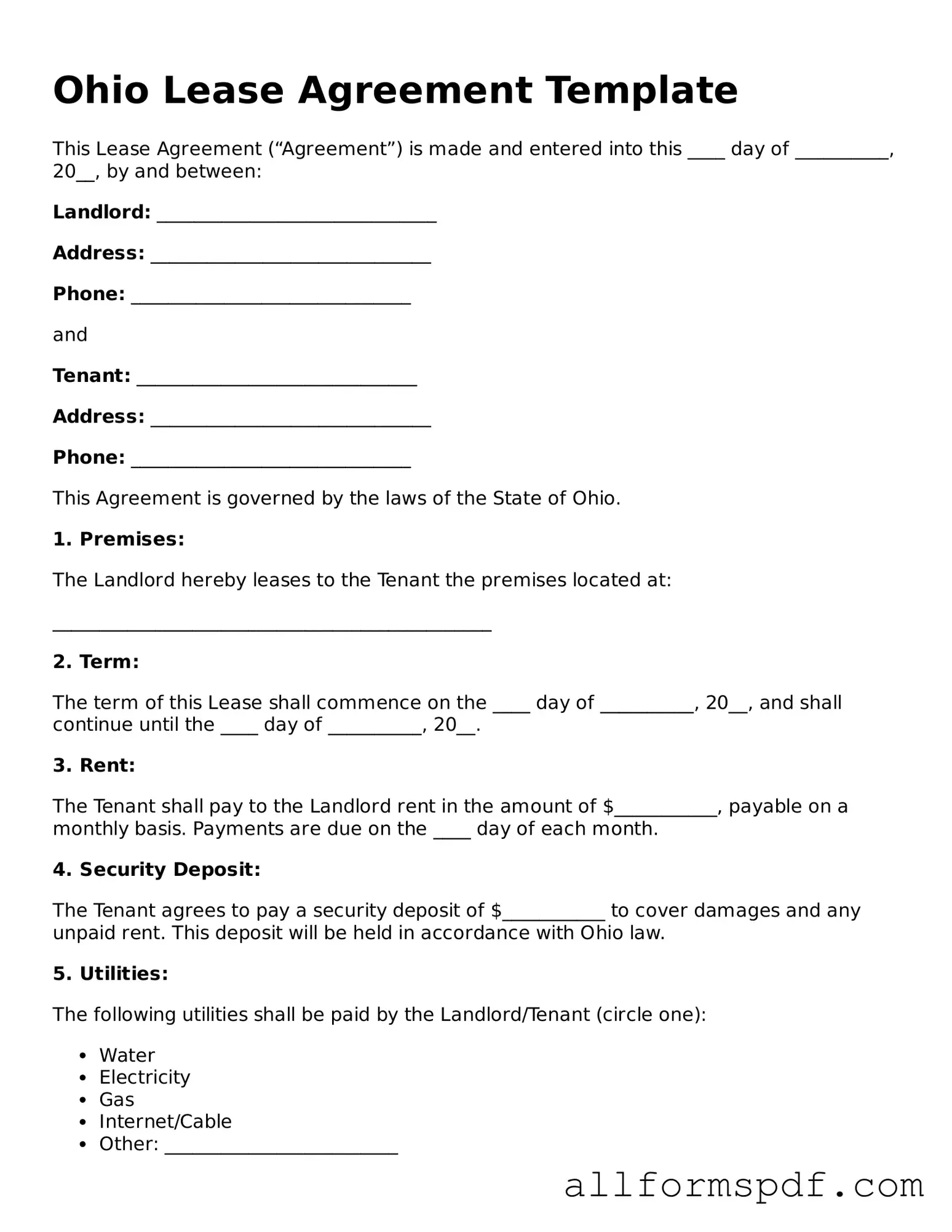Filling out the Ohio Lease Agreement form requires attention to detail. One common mistake is failing to include all necessary parties in the lease. Both the landlord and tenant must be clearly identified. Omitting a party can lead to disputes about responsibilities and rights under the lease.
Another frequent error is neglecting to specify the rental amount and payment terms. It is essential to clearly state the monthly rent and any additional fees. Without this information, misunderstandings about payment obligations may arise, leading to potential conflicts.
Many individuals also overlook the importance of detailing the lease term. The start and end dates should be explicitly stated. If these dates are missing or unclear, it may create confusion regarding the duration of the tenancy.
Additionally, people often fail to read the entire document before signing. This can result in agreeing to terms that are not fully understood. It is crucial to review all clauses, including those related to maintenance responsibilities and termination procedures.
Another mistake is not including provisions for security deposits. The lease should outline the amount of the deposit, conditions for its return, and any deductions that may be made. Without these details, disputes may occur at the end of the lease term.
Finally, many individuals do not keep a copy of the signed lease agreement. Having a copy is important for both parties. It serves as a reference point for the terms agreed upon and can be invaluable in case of future disagreements.
